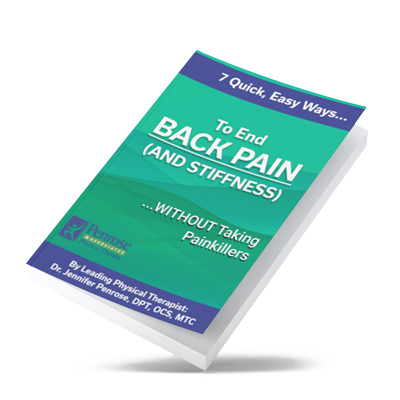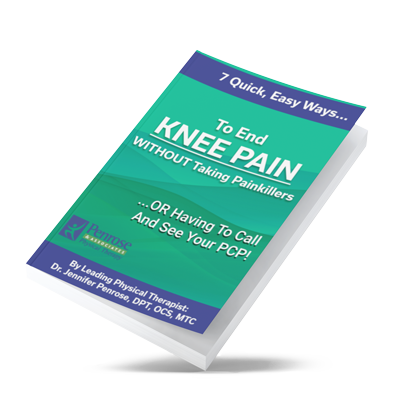I’m going to tell you some simple ways you can test your balance systems from home. Your balance depends on 2 things: your ability to sense your balance, and your ability to make corrections. Your 3 balance systems (vision, sensation and inner ear) help you with that first task by providing your brain with a constant stream of input. When one or more of these systems start to decrease in speed or quality, this can have a detrimental effect on your balance.
So how do you know if your 3 balance systems are working properly? You test them! And while some people might require some sophisticated testing, especially if the inner ear is involved, there are some really simple tests we use in the clinic to evaluate each of the systems. Before we begin, I want to give you a word of caution: make sure you’re in a safe environment if you want to try these balance tests. If your balance is poor, these tests will probably make you feel unsteady, and the last thing we want is for you to have a fall. Have your spouse or a friend help you if needed, and make sure you’re in a spot where you can easily correct your balance (by grabbing onto a high countertop or something like that).
4 Simple Balance Tests
In the clinic, we call these 4 positions the “Romberg” test. Do your best to maintain your balance for up to 30 seconds during each test, with your arms crossed over your chest (have your hand on the counter if needed). The first 2 positions are performed on a hard, level surface:
- Position 1: Feet together, eyes open. If you can’t do position one for 30 seconds easily do not move onto position 2. If you can’t do position 1 for at least 15 seconds do not attempt position 2-4.
- Position 2: Feet together, eyes closed. (Be ready to grab the counter).
The next 2 positions are performed on a squishy surface. We use a dense piece of foam in the clinic, but at home you can use a thick pillow or a couch cushion:
- Position 3: Feet together, eyes open. Be ready to grab the counter. If you can’t do position 3 for 30 seconds then do not attempt position 4.
- Position 4: Feet together, eyes closed.
A “normal” performance on each test would be the ability to maintain each position for 30 seconds with only minimal amounts of sway or wobbling. If you have to uncross your arms or touch your hand down, stop the test. In addition to uncrossing your arms, if you have to open your eyes on position 2 or 4, stop the test.
How To Interpret the Tests
Most people will be able to complete the full 30 seconds on the first position with only minimal sway/wobbling. If you have difficulty with the first position, which is the easiest, you likely have more than one balance system involved and you are at a high risk for falls. If you do fine with the first position but have difficulty with the second position, it’s likely that you’re visually dominant and have issues with both your sensation and inner ear. If you do just fine with the first 2 positions but then have difficulty with the third, you likely have issues with your sensation/proprioception, and possibly your inner ear as well. Lastly, if you have difficulty with the fourth position alone, you likely have some level of difficulty with your inner ear only.
The majority of people that try the Romberg test in the clinic will have difficulty with at least one of the positions, especially when we ask them to close their eyes. If the test interpretation seems confusing, let me give you the most common scenario we see: many people are overly reliant on their vision and have inner ear “weakness”. If you struggled with these tests then it would be prudent to come see us for balance training in order to prevent a fall and improve your confidence with your balance. Balance is not something you have to see decline with age. It is the number one threat to your independence and mobility. If you are feeling concerned about your balance request my free tips report on balance. We are happy to help you.
Please reach out to info@penrosept.com if you have questions or call/text Penrose & Associates Physical Therapy at 360-456-1444. We are located in Lacey in Hawks Prairie near Big 5 Sporting Goods at 1445 Galaxy Dr. Suite 301 Lacey, WA 98516. Request a free tips report on balance and falls at www.penrosept.com. We also host balance workshops – please email info@penrosept.com if you would like to attend and be notified of our upcoming workshop.






